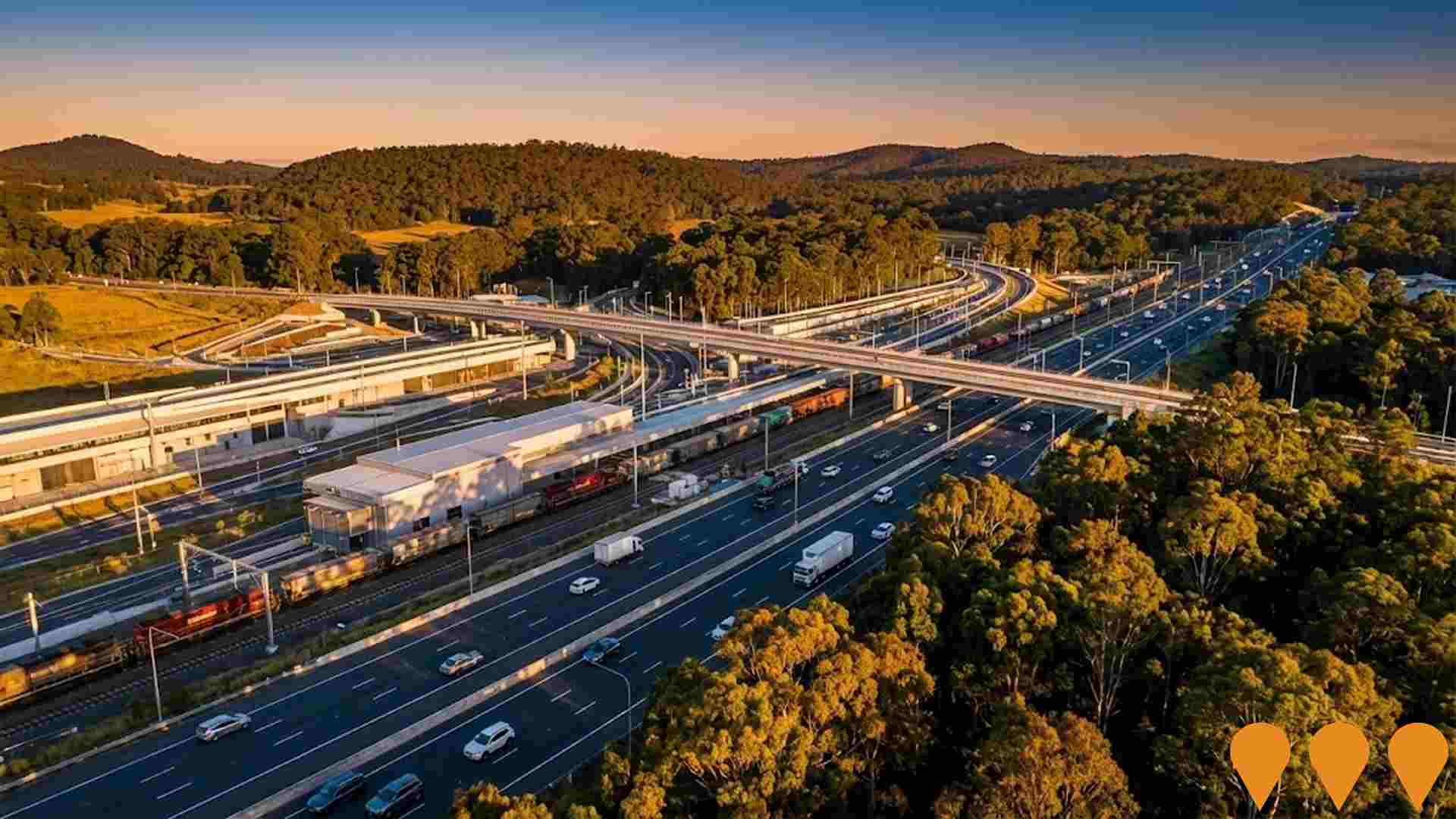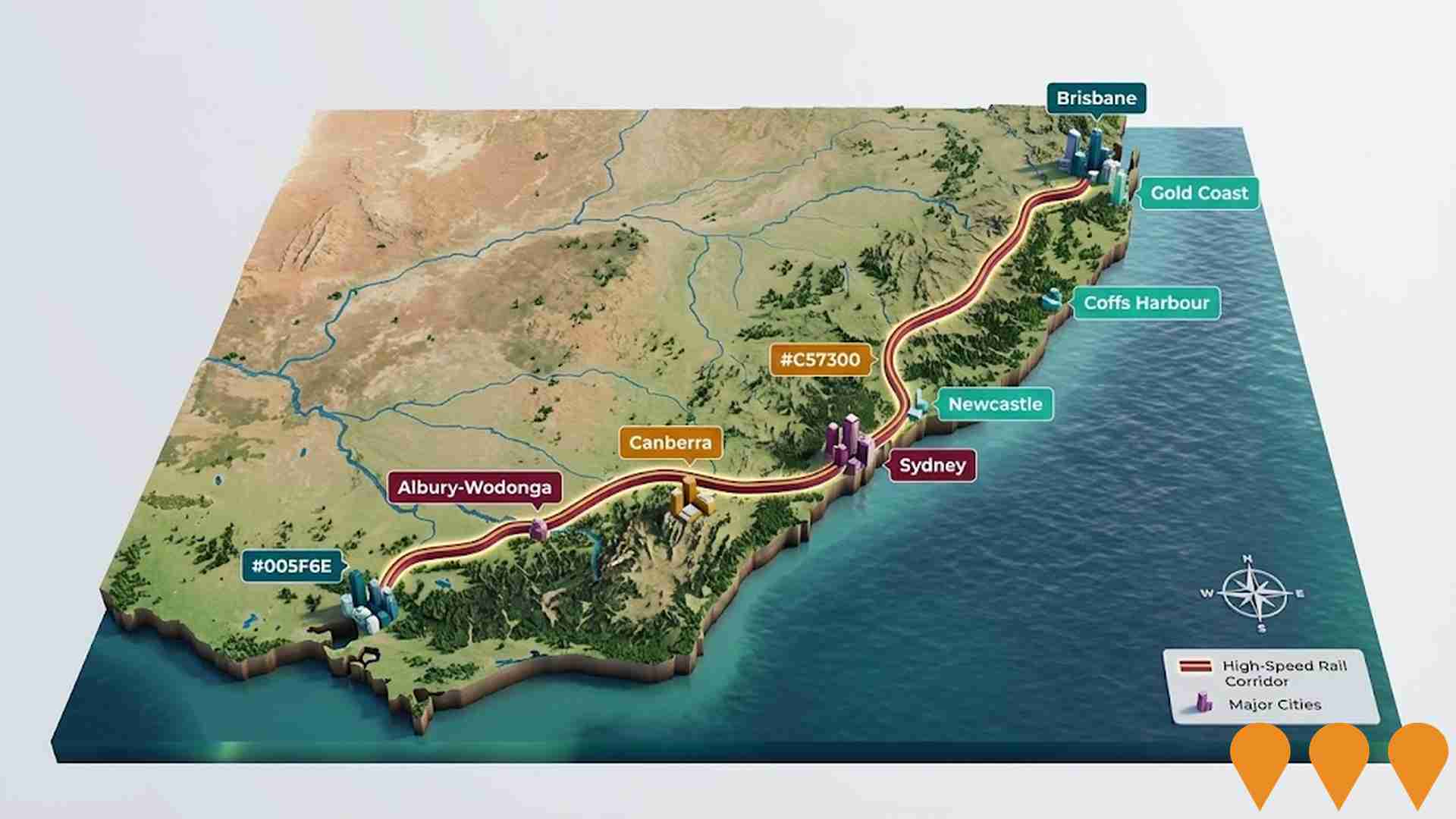Chart Color Schemes
est. as @ -- *
ABS ERP | -- people | --
2021 Census | -- people
Sales Activity
Curious about local property values? Filter the chart to assess the volume and appreciation (including resales) trends and regional comparisons, or scroll to the map below view this information at an individual property level.
Find a Recent Sale
Sales Detail
Population
Sawtell - Boambee is positioned among the lower quartile of areas assessed nationally for population growth based on AreaSearch's assessment of recent, and medium term trends
Based on AreaSearch's analysis, Sawtell - Boambee's population is around 20,487 as of November 2025. This reflects an increase of 421 people (2.1%) since the 2021 Census, which reported a population of 20,066 people. The change is inferred from the estimated resident population of 20,394 from the ABS as of June 2024 and an additional 132 validated new addresses since the Census date. This level of population equates to a density ratio of 173 persons per square kilometer. Sawtell - Boambee's 2.1% growth since census positions it within 2.1 percentage points of the SA3 area (4.2%), demonstrating competitive growth fundamentals. Population growth for the area was primarily driven by overseas migration, contributing approximately 71.1% of overall population gains during recent periods.
AreaSearch is adopting ABS/Geoscience Australia projections for each SA2 area, as released in 2024 with 2022 as the base year. For any SA2 areas not covered by this data, AreaSearch is utilising the NSW State Government's SA2 level projections, as released in 2022 with 2021 as the base year. Growth rates by age group from these aggregations are also applied to all areas for years 2032 to 2041. Over this period, projections indicate a decline in overall population, with the area's population expected to contract by 875 persons by 2041 according to this methodology. However, growth across specific age cohorts is anticipated, led by the 85 and over age group, which is projected to grow by 401 people.
Frequently Asked Questions - Population
Development
Residential development activity is lower than average in Sawtell - Boambee according to AreaSearch's national comparison of local real estate markets
Sawtell-Boambee recorded approximately 47 residential property approvals annually. Between FY21-FY25, it had 235 approved homes, with 9 more in FY26 thus far. On average, each new home brought 1.2 new residents yearly from FY21 to FY25, indicating balanced supply and demand.
New homes' average construction cost was $376,000. This year, it recorded $8.7 million in commercial development approvals. Compared nationally, Sawtell-Boambee had about half the new dwelling approvals per person, ranking at the 36th percentile, suggesting limited buyer options and increased demand for established properties. Its new building activity comprised 91% detached houses and 9% townhouses or apartments, reflecting its low-density character favoring family homes.
With an estimated 462 people per dwelling approval, it has a quiet development environment. Given stable or declining population forecasts, housing pressure may remain manageable, benefiting buyers.
Frequently Asked Questions - Development
Infrastructure
Sawtell - Boambee has limited levels of nearby infrastructure activity, ranking in the 19thth percentile nationally
Changes to local infrastructure significantly impact an area's performance. AreaSearch identified ten projects likely affecting the region. Notable ones are Toormina Oval Upgrade, Boambee East Residential Subdivision, Wonga Park Sawtell Playground Renewal, and 95 on First Townhouses (Sea Esta). The following list details those most relevant.
Professional plan users can use the search below to filter and access additional projects.
INFRASTRUCTURE SEARCH
 Denotes AI-based impression for illustrative purposes only, not to be taken as definitive under any circumstances. Please follow links and conduct other investigations from the project's source for actual imagery. Developers and project owners wishing us to use original imagery please Contact Us and we will do so.
Denotes AI-based impression for illustrative purposes only, not to be taken as definitive under any circumstances. Please follow links and conduct other investigations from the project's source for actual imagery. Developers and project owners wishing us to use original imagery please Contact Us and we will do so.
Frequently Asked Questions - Infrastructure
Low and Mid-Rise Housing Policy
State-wide NSW planning reforms via amendments to the State Environmental Planning Policy to enable more diverse low and mid-rise housing (dual occupancies, terraces, townhouses, manor houses and residential flat buildings up to 6 storeys) in well-located areas within 800 m of selected train, metro and light-rail stations and town centres. Stage 1 (dual occupancies in R2 zones statewide) commenced 1 July 2024. Stage 2 (mid-rise apartments, terraces and dual occupancies near stations) commenced 28 February 2025. Expected to facilitate up to 112,000 additional homes over the next five years.
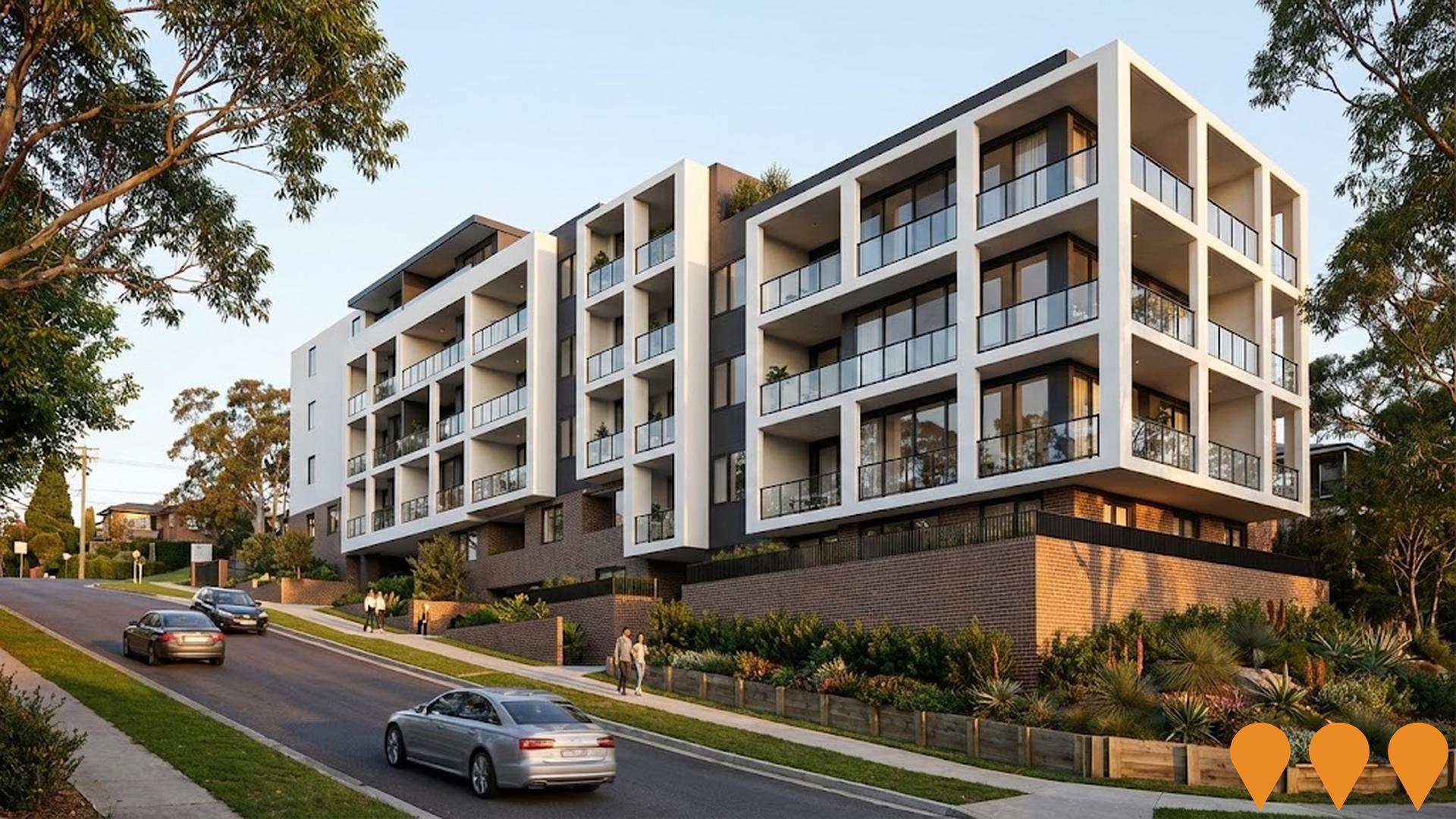
The Shoreline Luxury Retirement Living
A $150-million luxury retirement and residential aged care village featuring 185 architecturally-designed independent living apartments, terraces and villas, plus a 120-bed premium residential aged care home. Resort-style facilities include a swimming pool, cafe, bowling green, community gardens, Bombora Bar, and comprehensive recreation facilities in a secure gated community. First stages opened in October 2022, with ongoing staged construction. As of November 2025, the project is nearing final stages and remains on track for full completion in early 2027.

Coffs Harbour Bypass
A $2.2 billion, 14-kilometre four-lane bypass of Coffs Harbour, jointly funded by the Australian and NSW governments. Includes three tunnels (Roberts Hill, Gatelys Road, and Shephards Lane), approximately 12 km of new highway and 2 km of upgraded highway. Will remove around 12,000 vehicles per day from the Coffs Harbour CBD, improve road safety, boost freight efficiency, and save motorists approximately 12 minutes in travel time.
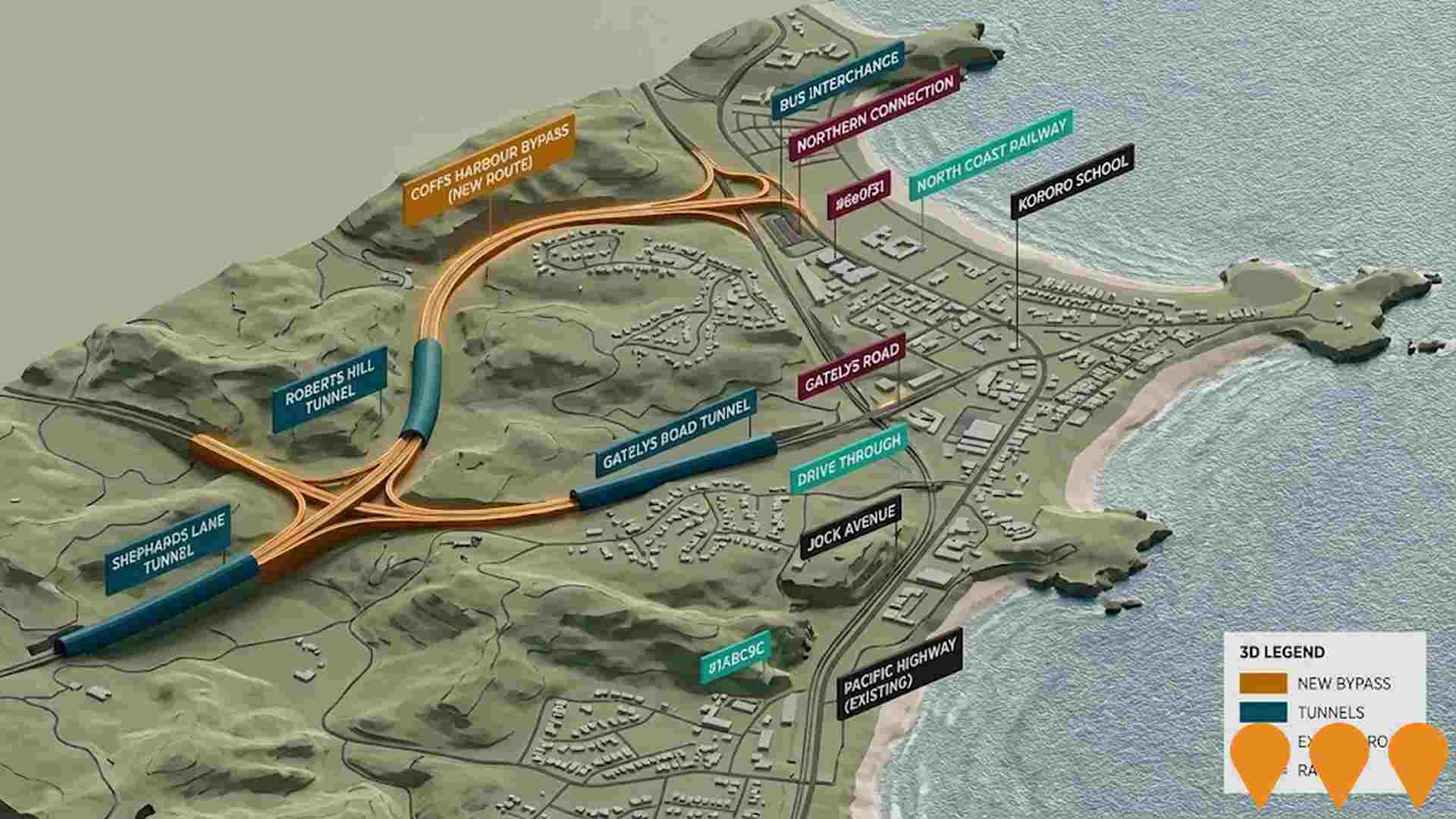
Elements at Coffs
A quality residential land release estate on the eastern side of the Pacific Highway offering generous reserves and open spaces for designing dream homes. Located conveniently near the airport, health campus, education facilities, and shopping centres. The development features multiple stages with Stage 4 currently selling, positioned halfway between Coffs Harbour and Sawtell.
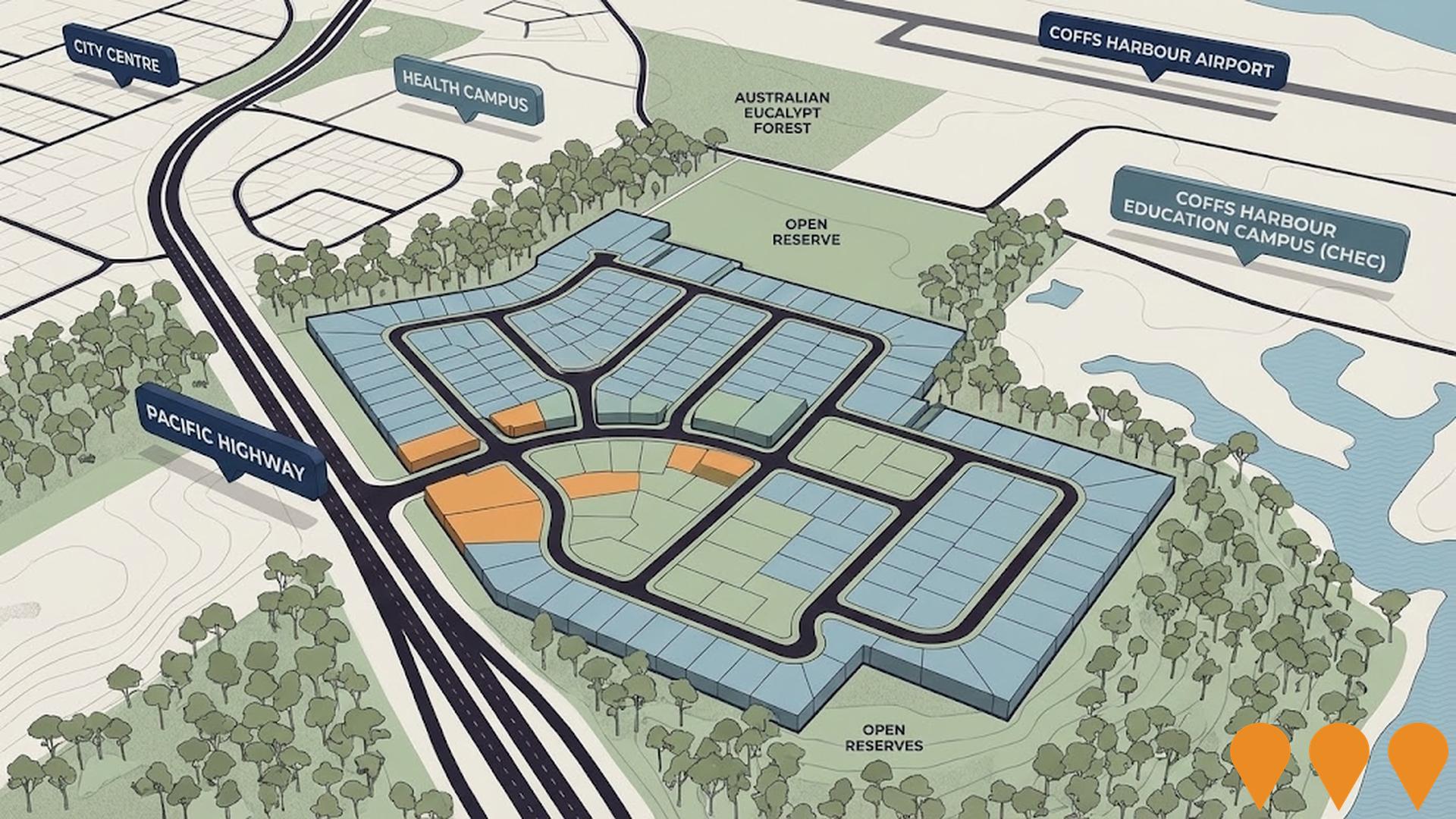
Sawtell Pool Upgrade Project
Redevelopment including a new eight-lane 25-metre main pool with an accessible lane, a new 10m x 8m learn-to-swim pool, a splash zone, and a modern multi-function building with new amenities. The project was deferred in late 2022 after funding deadlines could not be met and is planned to be revisited in the 2023-2024 financial year. The previous grant funding has been returned.

Toormina Oval Upgrade
A major transformation to enhance Toormina Oval, including an additional football field, a new car park, foot bridge, and new concrete footpaths, improving facilities for local sports teams and the community.

Wonga Park Sawtell Playground Renewal
Upgrade of the existing Wonga Playground to a new, modern play space with a new climbing structure, slide, swings and bouncers, shelter and picnic tables, and stone block retaining walls/seating. The new playground will be relocated slightly east of the existing BBQ shelter, away from the tree canopy, to protect the sensitive littoral rainforest ecosystem. Project value is $200,000.

Boambee East Residential Subdivision
A proposed two-stage residential subdivision creating 70 residential lots comprising 63 Torrens Title lots and 7 Community Title housing lots, with concept approval for 70 dwellings. Stage 1 includes construction of an access road via Bruce King Drive, demolition of two existing dwellings, a fire trail lot, and a residue lot to be dedicated to Council. The development has faced significant community opposition due to concerns about clearing approximately 4,600 square meters of native vegetation including 3,000 square meters of Prime Koala Habitat, threatened ecological communities, and impacts on community land surrounding the Boambee East Community Centre.

Employment
Employment conditions in Sawtell - Boambee remain below the national average according to AreaSearch analysis
Sawtell-Boambee has a skilled workforce with prominent essential services sectors. Its unemployment rate was 4.0% in the past year, with an estimated employment growth of 2.4%.
As of June 2025, there are 9,015 residents employed, and the unemployment rate is 3.7%, slightly higher than Rest of NSW's 3.4%. The participation rate matches Rest of NSW at 56.4%. Key employment industries include health care & social assistance, retail trade, and construction. Health care & social assistance has a significant presence with an employment share of 1.3 times the regional level.
However, agriculture, forestry & fishing is limited at 2.6%, compared to the regional average of 5.3%. The area may offer limited local employment opportunities based on Census data analysis. Over the past year, employment increased by 2.4% while labour force rose by 3.6%, causing unemployment to rise by 1.2 percentage points. In comparison, Rest of NSW saw a 0.1% decrease in employment and a 0.4 percentage point increase in unemployment. Jobs and Skills Australia's national employment forecasts from May 2025 project national employment growth of 6.6% over five years and 13.7% over ten years. Applying these projections to Sawtell-Boambee's employment mix suggests local growth of approximately 6.8% over five years and 14.1% over ten years, based on a simple weighting extrapolation for illustrative purposes.
Frequently Asked Questions - Employment
Income
Income figures position the area below 75% of locations analysed nationally by AreaSearch
Sawtell-Boambee's median income among taxpayers in financial year 2022 was $45,902. The average income stood at $55,224 during the same period. These figures compare to $49,459 and $62,998 respectively for Rest of NSW. Based on a Wage Price Index growth of 12.61% since financial year 2022, estimated median income as of September 2025 is approximately $51,690, with average income estimated at $62,188. Census data shows household, family and personal incomes in Sawtell-Boambee fall between the 24th and 25th percentiles nationally. The earnings profile indicates that 30.6% of the community earns within the $1,500-$2,999 range (6,269 individuals), similar to metropolitan regions where 29.9% occupy this range. Housing affordability pressures are severe, with only 82.7% of income remaining after housing costs, ranking at the 23rd percentile nationally.
Frequently Asked Questions - Income
Housing
Sawtell - Boambee is characterized by a predominantly suburban housing profile, with ownership patterns similar to the broader region
The dwelling structure in Sawtell - Boambee, as per the latest Census, consisted of 77.4% houses and 22.7% other dwellings (semi-detached, apartments, 'other' dwellings). This compares to Non-Metro NSW's 78.4% houses and 21.6% other dwellings. Home ownership in Sawtell - Boambee stood at 38.9%, with mortgaged dwellings at 33.0% and rented ones at 28.1%. The median monthly mortgage repayment was $1,700, below Non-Metro NSW's average of $1,733. The median weekly rent figure was $370, matching Non-Metro NSW's figure. Nationally, Sawtell - Boambee's mortgage repayments were lower than the Australian average of $1,863, and rents were less than the national figure of $375.
Frequently Asked Questions - Housing
Household Composition
Sawtell - Boambee has a typical household mix, with a fairly typical median household size
Family households comprise 69.6% of all households, including 26.1% couples with children, 28.9% couples without children, and 13.6% single parent families. Non-family households make up the remaining 30.4%, with lone person households at 27.4% and group households comprising 3.0%. The median household size is 2.4 people, which matches the Rest of NSW average.
Frequently Asked Questions - Households
Local Schools & Education
Educational outcomes in Sawtell - Boambee fall within the lower quartile nationally, indicating opportunities for improvement in qualification attainment
The area's university qualification rate is 21.2%, significantly lower than the NSW average of 32.2%. Bachelor degrees are the most common at 14.9%, followed by postgraduate qualifications (3.6%) and graduate diplomas (2.7%). Vocational credentials are prominent, with 40.6% of residents aged 15+ holding them - advanced diplomas at 10.9% and certificates at 29.7%. Educational participation is high, with 27.8% of residents currently enrolled in formal education: 10.4% in primary, 8.3% in secondary, and 2.8% in tertiary education.
There are 11 schools serving 3,382 students, with typical Australian school conditions (ICSEA: 968) and balanced educational opportunities. The educational mix includes 7 primary, 2 secondary, and 2 K-12 schools.
Frequently Asked Questions - Education
Schools Detail
Nearby Services & Amenities
Transport
Transport servicing is moderate compared to other areas nationally based on assessment of service frequency, route connectivity and accessibility
The analysis shows that there are currently 180 active public transport stops operating within Sawtell-Boambee. These stops offer a mix of train and bus services. There are 89 individual routes servicing these stops, collectively providing 1,397 weekly passenger trips.
The report rates transport accessibility as excellent, with residents typically located just 190 meters from the nearest transport stop. Service frequency averages at 199 trips per day across all routes, equating to approximately 7 weekly trips per individual stop.
Frequently Asked Questions - Transport
Transport Stops Detail
Health
Health performance in Sawtell - Boambee is well below average with prevalence of common health conditions notable across both younger and older age cohorts
Health data indicates significant health challenges in Sawtell-Boambee. Both younger and older age groups have high prevalence rates for common health conditions.
Only approximately 48% of the total population (~9,751 people) has private health cover, compared to the national average of 55.3%. The most prevalent medical conditions are arthritis (affecting 11.6% of residents) and mental health issues (impacting 9.6%). Only 61.2% of residents report no medical ailments, compared to 63.9% in the rest of NSW. As of 2021, approximately 24.6% of Sawtell-Boambee's population is aged 65 and over (5,043 people). Despite this, health outcomes among seniors perform better than those of the general population.
Frequently Asked Questions - Health
Cultural Diversity
Sawtell - Boambee is considerably less culturally diverse than average when assessed alongside AreaSearch's national rankings for language and cultural background related metrics
Sawtell-Boambee, as per the census conducted on 27 June 2016, had a lower than average cultural diversity with 87.9% of its population born in Australia. This is followed by 91.0% who are Australian citizens and 95.3% who speak English only at home. Christianity was the predominant religion, comprising 51.9% of Sawtell-Boambee's population.
The notable overrepresentation was seen in the 'Other' category, which constituted 1.2% of the population compared to 3.3% across Rest of NSW. In terms of ancestry, the top three groups were English (32.1%), Australian (29.9%), and Irish (9.3%). There were significant differences in the representation of certain ethnic groups: Australian Aboriginal was overrepresented at 4.4% compared to 4.0% regionally, Scottish at 8.6% versus 8.3%, and Maltese at 0.4% compared to 0.3%.
Frequently Asked Questions - Diversity
Age
Sawtell - Boambee hosts an older demographic, ranking in the top quartile nationwide
Sawtell-Boambee has a median age of 45 years, which is slightly higher than Rest of NSW's median age of 43 years and considerably older than the national norm of 38 years. Compared to the Rest of NSW average, Sawtell-Boambee has an over-representation of the 75-84 age group (8.8% locally), while the 25-34 age group is under-represented (10.1%). Between 2021 and present, the 75-84 age group has increased from 7.7% to 8.8% of the population. Conversely, the 55-64 age group has decreased from 13.6% to 12.2%. By 2041, demographic modeling suggests Sawtell-Boambee's age profile will change significantly. The 85+ age cohort is projected to grow by 406 people (62%), from 653 to 1,060. Notably, the combined 65+ age groups are expected to account for 87% of total population growth, reflecting the area's aging demographic profile. Conversely, population declines are projected for the 45-54 and 0-4 age cohorts.




